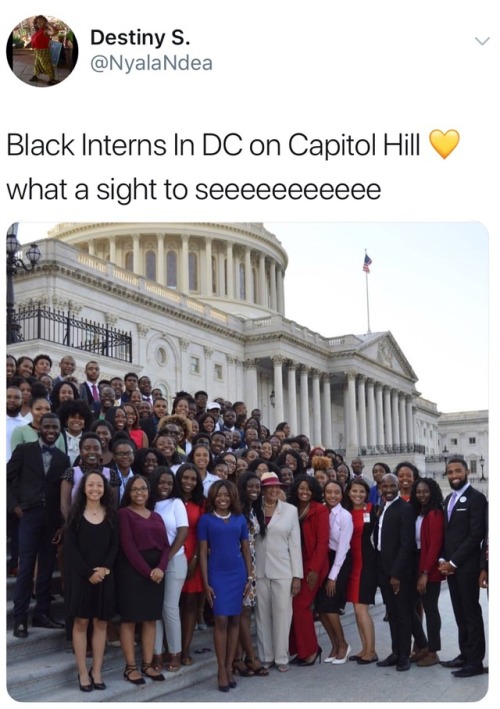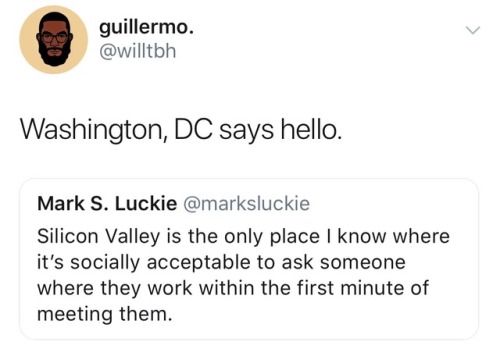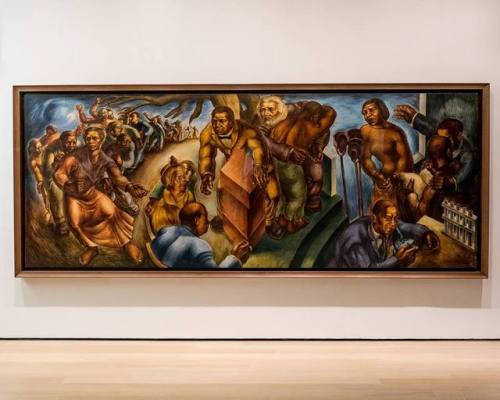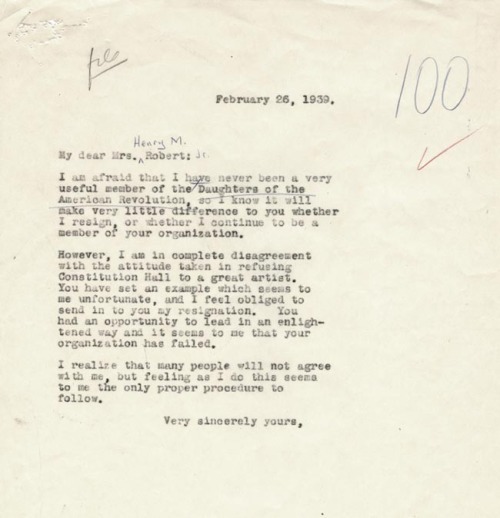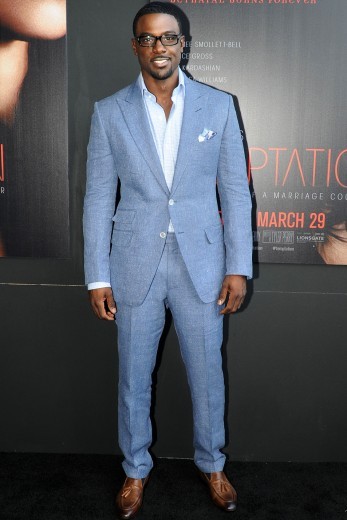#howard university
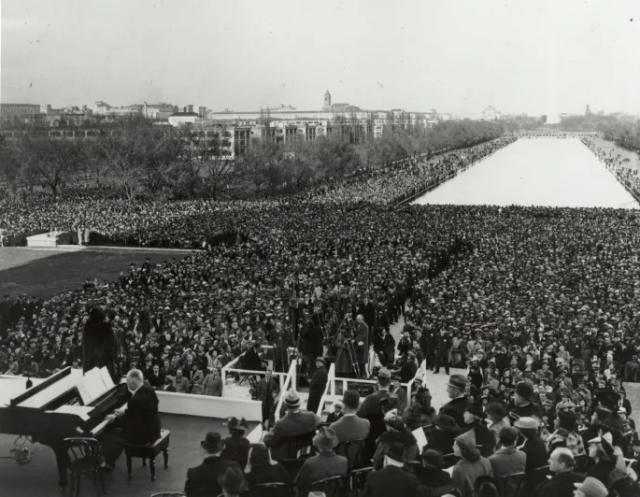
Marian Anderson singing from the steps of the Lincoln Memorial before a crowd of 75,000 people, 4/9/1939. (NARA ID 595378)
Marian Anderson’s 1939 EASTERConcert
By Miriam Kleiman, Public Affairs
Marian Anderson was the Beyoncé of the opera world when she was invited to perform in DC at a concert planned for the Daughters of the American Revolution (DAR) Constitution Hall. The DAR’s decision to bar her from doing so due to its “all-white performer policy” led to a turning point in civil rights history - her historic Easter concert on the steps of the Lincoln Memorial before a crowd of 75,000 admirers. Listen to this incredible concert online and discover through our records:
- Did the Daughters of the American Revolution (DAR) reallyhave an “all-white performer policy”?
- How was First Lady Eleanor Roosevelt involved, and did she really resign from DAR?
- What was the role of Howard University and its Omega Psi Phi Fraternity?
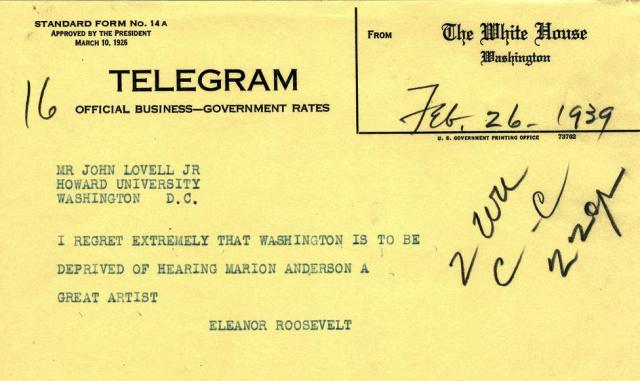
Eleanor Roosevelt to John Lovell, Jr. of Howard University, 2/26/1939.

Eleanor Roosevelt and Marian Anderson in Japan, 5/22/1953, NARA ID 195989.

Petition from Omega Psi Phi, April 1939. (Records of the U.S. Senate, National Archives).

Marian Anderson Poster, 8/26/1957, NARA ID 6948897.

President John F. Kennedy with Singer Marian Anderson and her accompanist Franz Rupp in the Oval Office 3/22/1962. JFK Library ID AR7113-A.
Related upcoming program for kids!
Meet Marian Anderson!National Archives Comes Alive Young Learners Program
Thursday, May 19, 2022 at 11 am EDT, View on YouTube.

See online:
- Pieces of Historypost by Adam Berenbak, Center for Legislative Archives.
- ReDiscovering Black History post by Alexis Hill, Special Media divisione
- Marian Anderson Performs at the Lincoln Memorial, DocsTeach
- Eleanor Roosevelt and Marian Anderson, FDR Library
- Eleanor Roosevelt Resigns from the Daughters of the American Revolution, FDR Library
Howard gets $2M grant to digitize Black newspaper archive
“Howard University has received a $2 million donation to digitize a major collection of Black newspaper archives in hopes of making it more broadly available to researchers and the public.

The Black Press Archives, dating to the 1970s, contains over 2,000 newspaper titles from the U.S. and countries in Africa and the Caribbean. It includes well-known U.S. papers like the Chicago Defender and New York Amsterdam News as well as publications in French, Xhosa and Kiswahili.”
Nikole Hannah-Jones Rejects UNC-Chapel Hill Position for Job at Howard U Along With Ta-Nehisi Coates
“Nikole Hannah-Jones will not be joining the faculty at the University of North Carolina at Chapel Hill—despite the Pulitzer Prize-winning journalist finally being granted tenure at the school following a long, white tears-infused drama that should never have been entertained by the school’s board of trustees. Instead, Hannah-Jones and famed author Ta-Nehisi Coates will both be starting jobs at Howard University, a renowned HBCU and a school that didn’t force the creator of The 1619 Project into a Hannah-Jones-vs-white-fragility battle all because conservatives get all in their feelings over Blackness being centered in American history.”


Well we know one is in the White house. To read more, clickhere.
These are the Wizards’ new city edition uniforms that they will wear 12 times this season! What do you think?
Post link
Glad to see it this empty and also not surprised that no one wants to attend this event while Trump is in office. #bringbackbarack #BBB
Post link
Charles White: Five Great American Negroes
Charles White’s first mural “Five Great American Negroes”—painted when he was just 21 years old—comes to New York thanks to a historic loan from Howard University. Created in Chicago as part of a fundraiser for the South Side Community Art Center, the “great Americans” depicted were chosen by readers of the Chicago Defender, a major black newspaper. Can you name all five?
Like many American artists, White was influenced by Mexican muralists like Diego Rivera and adapted their strategies for educating and inspiring viewers. White would produce three more murals between 1939 and 1943. Their public placement perfectly suited his lifelong goal of promoting African American history to combat what he called “a plague of distortions” in popular visual culture.
…
[“Photograph of Charles White working on ‘Five Great American Negroes’ (1939).” 1939. Gelatin silver print. The Museum of Modern Art Archives, New York; Charles White. “Five Great American Negroes.” 1939. Oil on canvas. From the Collection of the Howard University Gallery of Art, Washington, D.C. © The Charles White Archives. Photo: Austin Donohue]
Post link
That time I was in a commercial for Howard University’s ig page…
Needless to say it was awesome to work with so many amazing black creatives!
Travis Scott’s Cactus Jack Foundation Awards $1 Million to 100 Black College students to ensure they graduate in 2022
Travis Scott’s Cactus Jack Foundation Awards $1 Million to 100 Black College students to ensure they graduate in 2022
Travis Scott’s Waymon Webster Scholarships, Now in Their Second Year, Ensures Black Students Experiencing Last-Minute Financial Adversity Graduated From College – A Foundational Component of Scott’s Project HEAL Effort, Announced Earlier This Year.
Family Effort: Scholarship is Named for Travis Scott’s Grandfather, an HBCU Educator, and Spearheaded by Scott’s Sister, Jordan Webster – Who…





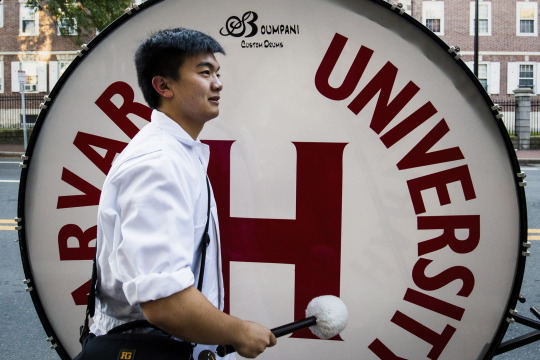














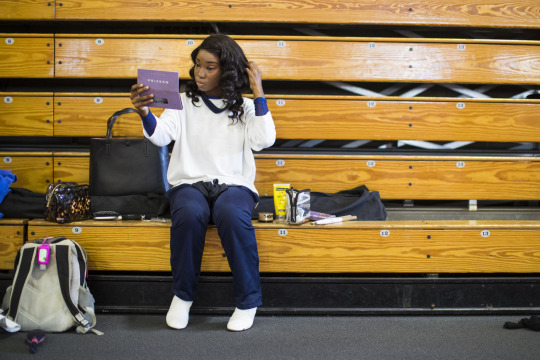








Had a blast photographing Harvard and Howard University as they met at Harvard Coliseum for the first football game between the two schools. The Bison had never played an Ivy League school and the Crimson had never competed against a historically black college or university in football. Shot on assignment for ESPN


Sound so smart like you graduated college,
Like you went to Yale but you probably went to….❤
Today in History: Eleanor Roosevelt Resigns from the DAR in Support of Marian Anderson
Eleanor Roosevelt first met African American contralto opera singer Marian Anderson in 1935 when the singer was invited to perform at the White House.
Ms. Anderson had performed throughout Europe to great praise, and after the White House concert the singer focused her attentions on a lengthy concert tour of the United States. Beginning in 1936, Anderson sang an annual concert to benefit the Howard University School of Music in Washington, DC. These benefit concerts were so successful, that each year larger and larger venues had to be found.
In January 1939, Howard University petitioned the Daughters of the American Revolution (DAR) to use its Washington, DC auditorium called Constitution Hall for a concert to be scheduled over Easter weekend that year. Constitution Hall was built in the late 1920s to house the DAR’s national headquarters and host its annual conventions. It seated 4,000 people, and was the largest auditorium in the capital. As such, it was the center of the city’s fine arts and music events universe.
However, in 1939, Washington, DC was still a racially segregated city. As part of the original funding arrangements for Constitution Hall, major donors had insisted that only whites could perform on stage.This unwritten white-performers-only policy was enforced against African American singer/actor Paul Robeson in 1930. Additionally, blacks who attended events there were seated in a segregated section of the Hall.
The organizers of Marian Anderson’s 1939 concert hoped that Anderson’s fame and reputation would encourage the DAR to make an exception to its restrictive policy. But the request was denied anyway, and despite pressure from the press, other great artists, politicians, and a new organization called the Marian Anderson Citizens Committee (MACC), the DAR held fast and continued to deny Anderson use of the Hall.
On February 26, 1939, Mrs. Roosevelt submitted her letter of resignation to the DAR president, declaring that the organization had “set an example which seems to me unfortunate” and that the DAR had “an opportunity to lead in an enlightened way” but had “failed to do so.” That same day, she sent a telegram to an officer of the Marian Anderson Citizens Committee publicly expressing for the first time her disappointment that Anderson was being denied a concert venue. Read More
Images:
Eleanor Roosevelt’s DAR resignation letter, 2/26/39.
Eleanor Roosevelt to John Lovell, Jr. of Howard University. February 26, 1939.
Post link




